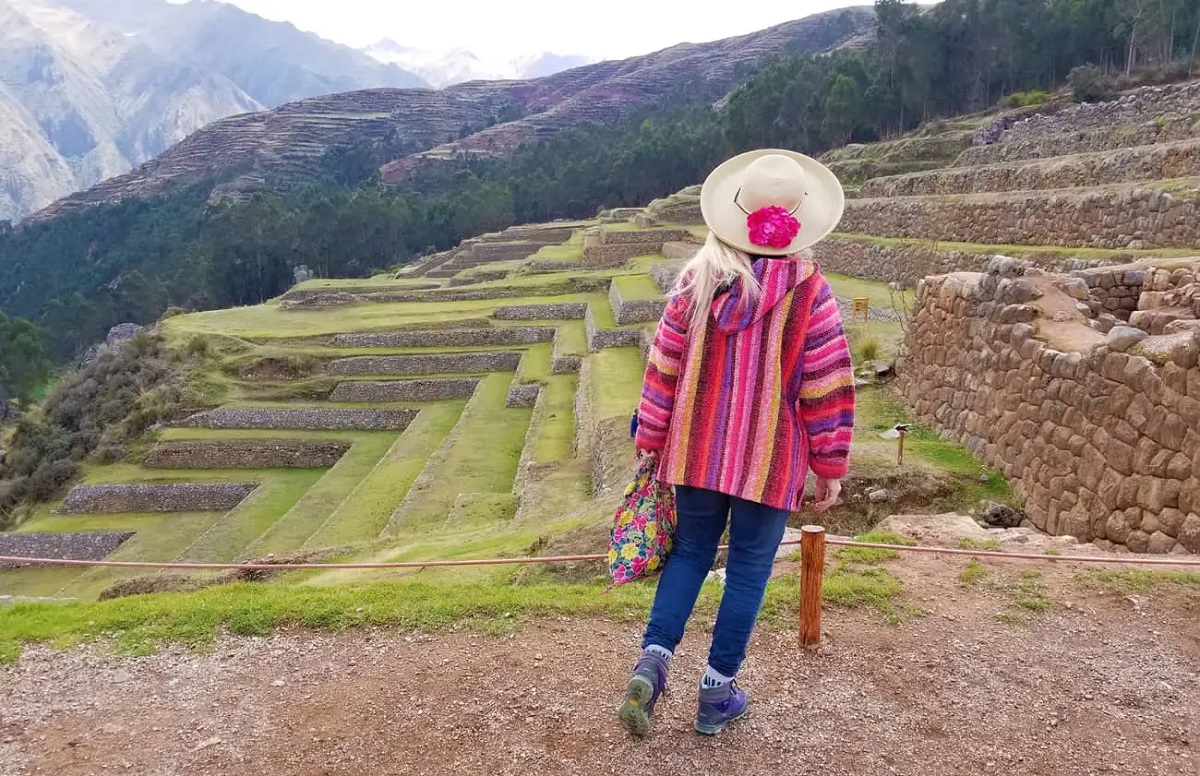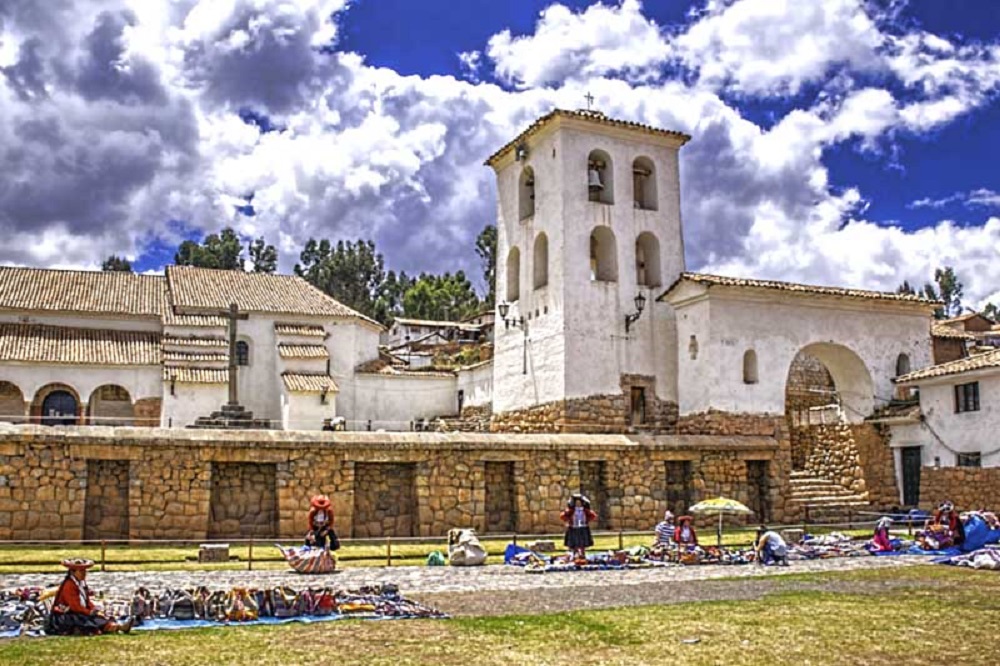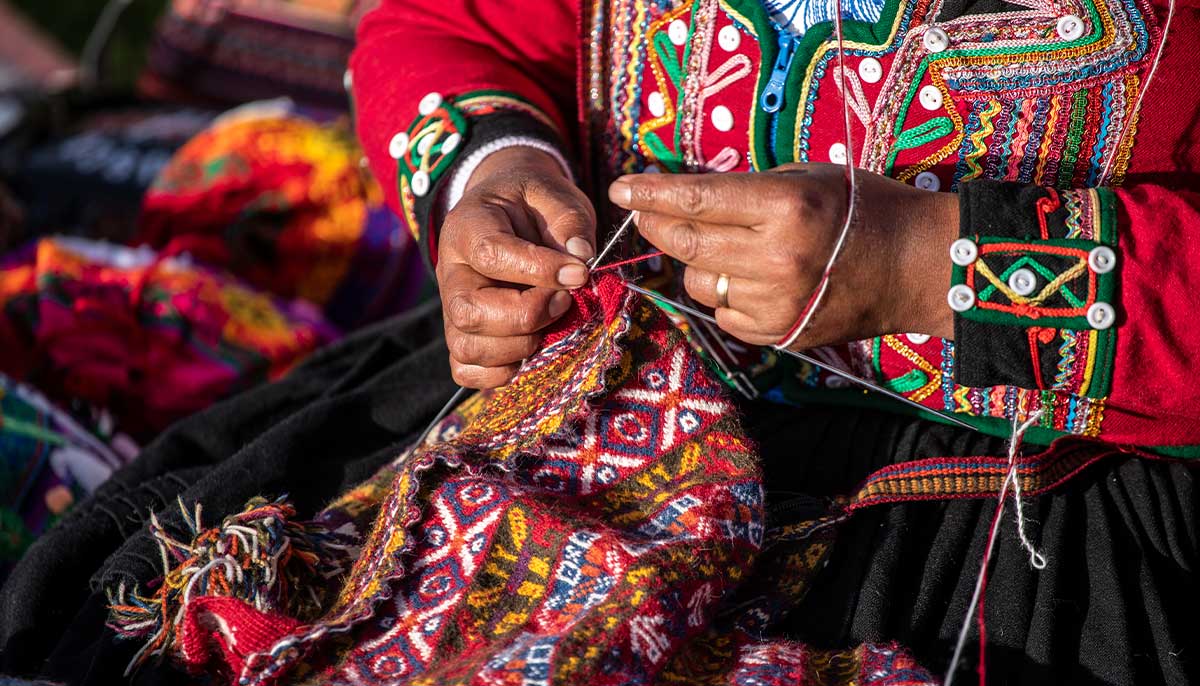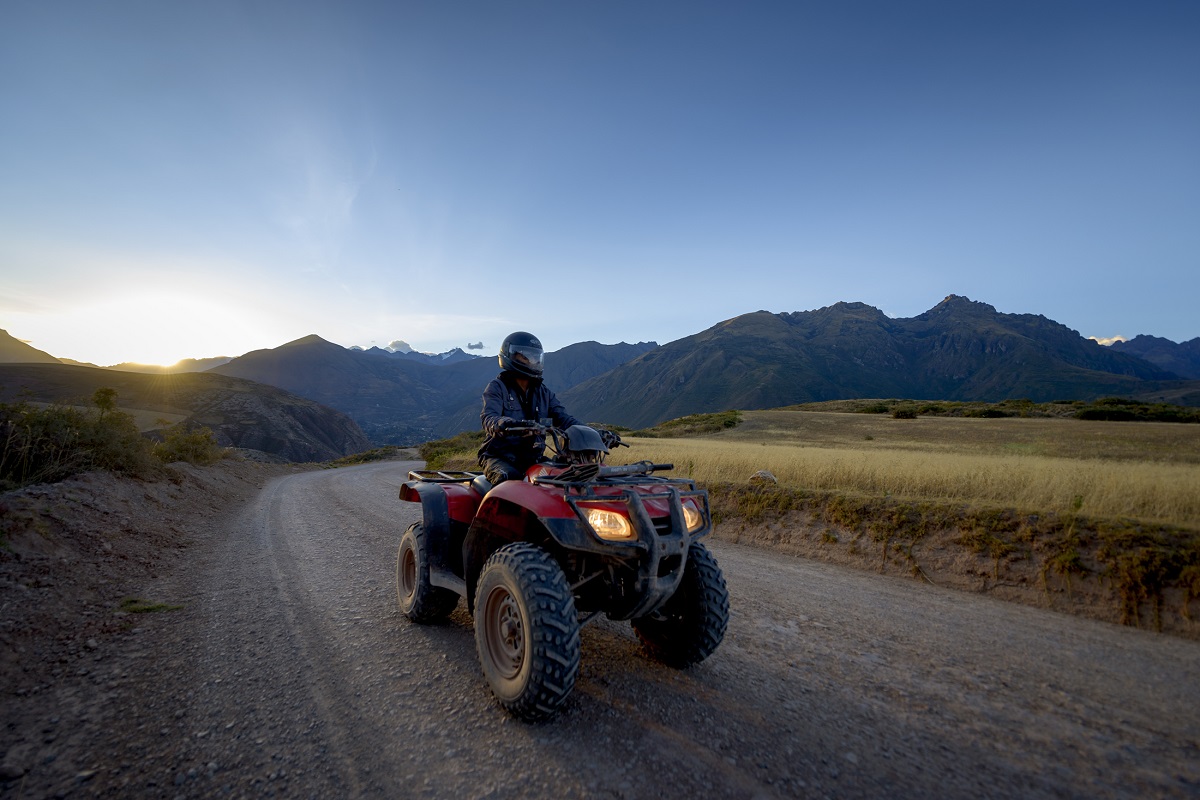
It is the capital of the district of the same name, which belongs to the province of Urubamba. It is one of the most representative towns of Cusco in general. Known for its archeology and its crafts.
Chinchero is recognized as the ‘rainbow town’ because in the rainy season (especially in January, February or March) it is possible to observe this natural phenomenon very easily in this town.
It is located 28 kilometers from the city of Cusco, in the province of Urubamba, at 3,780 meters above sea level. The town is flanked by large snow-capped mountains such as Salkantay, Verónica and Soray, and the Huaypo and Piuray lagoons.
Chinchero is the most typical and picturesque town of the Sacred Valley of the Incas, it brings together twelve Andean indigenous communities that are still governed by the Inca organization system called “Ayllu”.
Its population is dedicated to the cultivation of native species and livestock, although today tourism drives a large part of the local economy. A people that struggles to keep its ancient tradition alive.
Chinchero is one of the few places where it seems that time does not pass, since Inca traditions and culture still persist. The people who inhabit it are of Inca blood and the predominant language is Quechua, although almost all the inhabitants of this area speak Spanish as a second language.
Their fertile lands make them excellent producers of potatoes, ollucos, geese, beans, barley and wheat, traditional products whose sowing dates back to the time of the Incas and even today they constitute the axis of agricultural trade in the area.
In Chinchero, its spectacular main square stands out in a very notorious way, an extraordinary fusion between Inca architecture and colonial architecture, which makes Chinchero a unique place.
Next to the square stands the remains of what was the palace of the Inca Túpac Yupanqui, a great Inca wall with 10 trapezoidal niches that is preserved until today, shows how beautiful the palace must have been.
In addition, in the square and its surroundings there are Inca constructions and terraces that show the original Inca urban layout.
The chronicles say that in 1540 A.D. Manco Inca had Chinchero set on fire while he fled from the Spanish conquerors, so that they would run out of supplies.

On the remains of the Túpac Yupanqui palace is the church of Chinchero.
It was built around 1572 by Viceroy Toledo and completed in 1607, naming it the Church of Our Lady of Monserrat.
This church is one of the best examples of Cusco religious art, it was built on Inca walls, with an altar decorated in gold leaf in the Baroque style and on whose walls you can see original works by indigenous artists Diego Quispe Tito (the highest representative from the Cusco school) and Francisco Chihuantito.

In Chinchero the Incas built an impressive network of Inca platforms and roads that surrounded the Túpac Yupanqui palace.
Research at the archaeological site indicates that the place was populated before the Incas by the Killke culture, which took full advantage of the fertile lands of the place.
The archaeological site covers an area of ​​up to 43 hectares where you can see platforms, terraces, stone enclosures, Inca roads, stone banks, water channels and temples.
During the war between the Incas and the Spanish in the mid-16th century, Manco Inca's army set fire to Chinchero, its platforms and enclosures, to prevent the Spanish from getting supplies during the Inca flight to Vilcabamba.
Today the archaeological site of Chinchero is the main tourist attraction of the place. The entrance is included in the Tourist Ticket of Cusco (cost of 70 Peruvian soles) that also offers the entrance to Pisac, Ollantaytambo and Moray.
Chinchero is characterized by the living culture that it still maintains despite the strong incursion of the modern world on traditions.
On Sundays, a fair is held in the main square of Chinchero, where you will see the trade of local products, handicrafts and especially textiles. There it is still possible to obtain products through the trick, just as the Incas did.
Chinchero textiles are made in the ancestral style. That is, the weaving and dyeing are done using natural products, without modern artifacts.
If you wish, you can see in the textile centers how the women dressed in their beautiful costumes carry out the process of spinning and dyeing the wool with natural dyes, and appreciate the way they weave following the millenary tradition.
In the town there are dozens of textile centers that show the visitor this ancestral way of making their clothes. In each store there are sale of products made of alpaca and baby alpaca.

Chinchero is surrounded by two large and beautiful lagoons: Piuray and Huaypo. These are 18 kilometers apart. Since Inca times, these have been a natural water source for the city of Cuzco and various towns in the Sacred Valley of the Incas.
Around the lagoons you can see a mountainous landscape where the snow-capped Soray, Verónica and ‘Apu’ Salkantay stand out.
Likewise, in these lagoons you can practice adventure sports such as kayaking and stand up paddle. To do this, you must contact the tourism agency of your choice.
There is a famous legend about these lagoons. It tells that the first Inca ruler Manco Capac received the order from his father, the sun god, who, together with his children, accompany him to his death, the sunset. The Inca did so. However, before reaching their destination, the children became lagoons: the boy who was later became Huaypo and the girl who was delayed in Piuray.
The geography full of mountains of Chinchero is ideal for the practice of various adventure sports such as: cycling, paragliding, hiking and ATV routes.
The ATV adventure is highly preferred by young people visiting the Sacred Valley of the Incas. This begins in Chinchero, crossing its fields and mountain landscapes until visiting the Salineras de Maras and the circular platforms of Moray.

The paragliding takes place in Cerro Sacro, in the upper part of Chinchero. There the winds are conducive to fly over with incredible views of the entire Sacred Valley. To carry out this adventure you can contact any tourism agency in Cusco.
Although cycling and hiking can be done on your own, it is best to go with a tourism agency that offers 100% security.
On the other hand, if you want to experience the religious spirit and the atmosphere of joy that characterizes this Cusco town, the festival of the Virgin of the Nativity - patron saint of Chinchero -, celebrated every year at the beginning of September, is the best opportunity to share and enjoy with the local population.
The festival is accompanied by multiple and colorful troupes that parade to the rhythm of typical dances through the main streets, concluding with the pilgrimage to the shrine of the Lord of Qoyllur Rit'i, one of the most sacrificed in Peru, as the devotees travel altitudes that are rise for 5000 ms. n. m. and withstand temperatures below zero degrees.
To travel to this town, you must first move to Cusco. From Lima, there are about 20 hours of travel by bus whose cost of the ticket varies between 100 and 200 soles; Another option is by plane with a flight time of only one hour for the price of approximately 350 soles.
Once in the Imperial City, you will have to go to the station, located on Pavitos street, where the buses leave for Chinchero. The cost of the ticket is 5 soles per person and the travel time is approximately 45 minutes. Another alternative is through a collective taxi that costs between 60 and 120 soles.
If you want to know, in addition to Chinchero, the rest of the towns located in the Sacred Valley such as Urubamba, Ollantaytambo and Pisac, you can decide on a tour service organized by a tourism agency. Without a doubt, it is the most comfortable option that provides greater flexibility in schedules and itinerary.
2 Day Train Tour to Machu Picchu
Sacred Valley and Machu Picchu 2 Day Tour
Classic Inca Trail Tour (4 Days/3 Nights)
